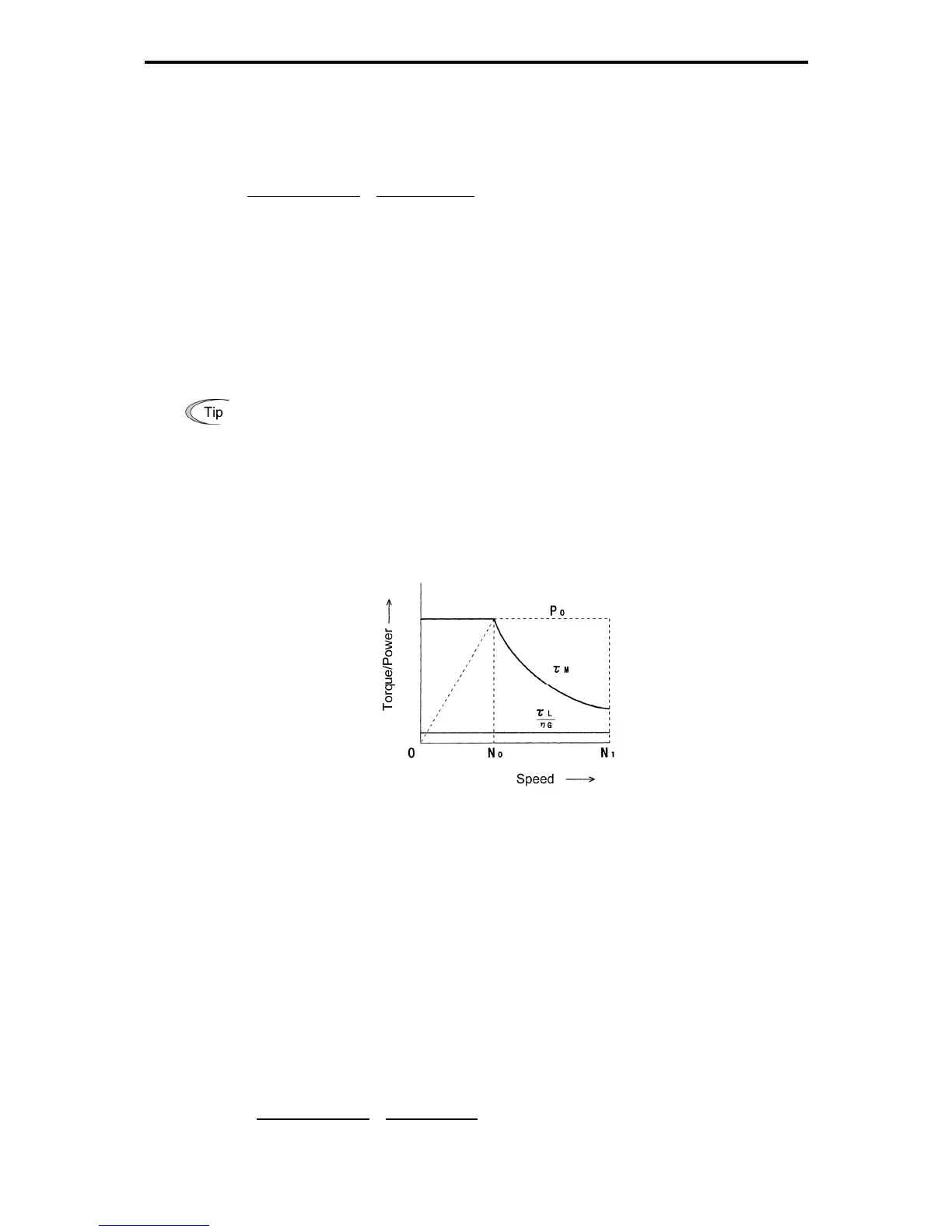10.1 Selecting Motors and Inverters
10-12
[3] Calculation of the deceleration time
In a load system shown in Figure 10.1-11, the time needed to stop the motor rotating at a speed of N
M
(r/min) is calculated with the following equation:
J
1
: Motor shaft moment of inertia (kg·m
2
)
J
2
: Load shaft moment of inertia converted to motor shaft (kg·m
2
)
τ
M
: Minimum motor output torque in braking (or decelerating) motor (N·m)
τ
L
: Maximum load torque converted to motor shaft (N·m)
η
G
: Reduction-gear efficiency
In the above equation, generally output torque τ
M
is negative and load torque τ
L
is positive. So,
deceleration time becomes shorter.
For lift applications, calculate the deceleration time using the negative value of τ
L
(maximum
load torque converted to motor shaft) to select inverter capacity.
[4] Calculating non-linear acceleration/deceleration time
In applications requiring frequent acceleration/deceleration, the inverter can accelerate/decelerate the
motor in the shortest time utilizing all torque margin. The inverter in a vector control mode can easily
perform this type of operation.
Figure 10.1-12 An Example of Driving Characteristics with a Constant Output Range
In this case, the acceleration/deceleration vs. speed curve will form a non-linear figure, and the
acceleration/deceleration time cannot be calculated by a single expression. Generally, the
acceleration/deceleration time is obtained by calculating the acceleration/deceleration time of UN that is a
difference of speed N broken into small parts, and then integrating it to obtain the total
acceleration/deceleration time from start to end. Because the smaller UN provides higher accuracy, this
numerical calculation needs an aid of a computer program.
The following is a guide for the numerical calculation method using a computer program. Figure 10.1-12
illustrates an example of driving characteristics with a constant output range. In the figure, the range under
N
0
is of constant torque characteristics, and the range between N
0
and N
1
is of a constant output with the
non-linear acceleration/deceleration characteristics.
The expression (10.17) gives an acceleration time Δt
ACC
.
J
1
+ J
2
/ η
G
2π • U N
Ut
ACC
=
τ
M
- τ
L
/ η
G
•
60
(s) (10.17)
J
1
+ J
2
• η
G
2π • (0 - N
M
)
t
DEC
=
τ
M
- τ
L
• η
G
•
60
(s) (10.16)

